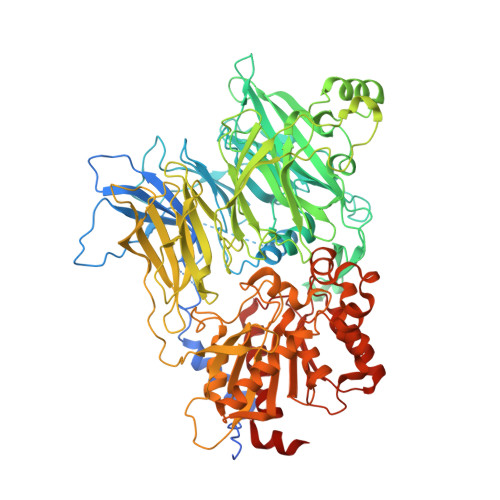Aerosol-based ligand soaking of reservoir-free protein crystals.
Ross, B., Krapp, S., Geiss-Friedlander, R., Littmann, W., Huber, R., Kiefersauer, R.(2021) J Appl Crystallogr 54: 895-902
- PubMed: 34188616
- DOI: https://doi.org/10.1107/S1600576721003551
- Primary Citation of Related Structures:
6TRW, 6TRX, 7NVQ - PubMed Abstract:
Soaking of macromolecular crystals allows the formation of complexes via diffusion of molecules into a preformed crystal for structural analysis. Soaking offers various advantages over co-crystallization, e.g. small samples and high-throughput experimentation. However, this method has disadvantages, such as inducing mechanical stress on crystals and reduced success rate caused by low affinity/solubility of the ligand. To bypass these issues, the Picodropper was previously developed in the authors' laboratory. This technique aimed to deliver small volumes of compound solution in response to crystal dehydration supported by the Free Mounting System humidity control or by IR-laser-induced protein crystal transformation. Herein, a new related soaking development, the Aerosol-Generator, is introduced. This device delivers compounds onto the solution-free surface of protein crystals using an ultrasonic technique. The produced aerosol stream enables an easier and more accurate control of solution volumes, reduced crystal handling, and crystal-size-independent soaking. The Aerosol-Generator has been used to produce complexes of DPP8 crystals, where otherwise regular soaking did not achieve complex formation. These results demonstrate the potential of this device in challenging ligand-binding scenarios and contribute to further understanding of DPP8 inhibitor binding.
- Max Planck Institut für Biochemie, D-82152 Martinsried, Germany.
Organizational Affiliation:




















